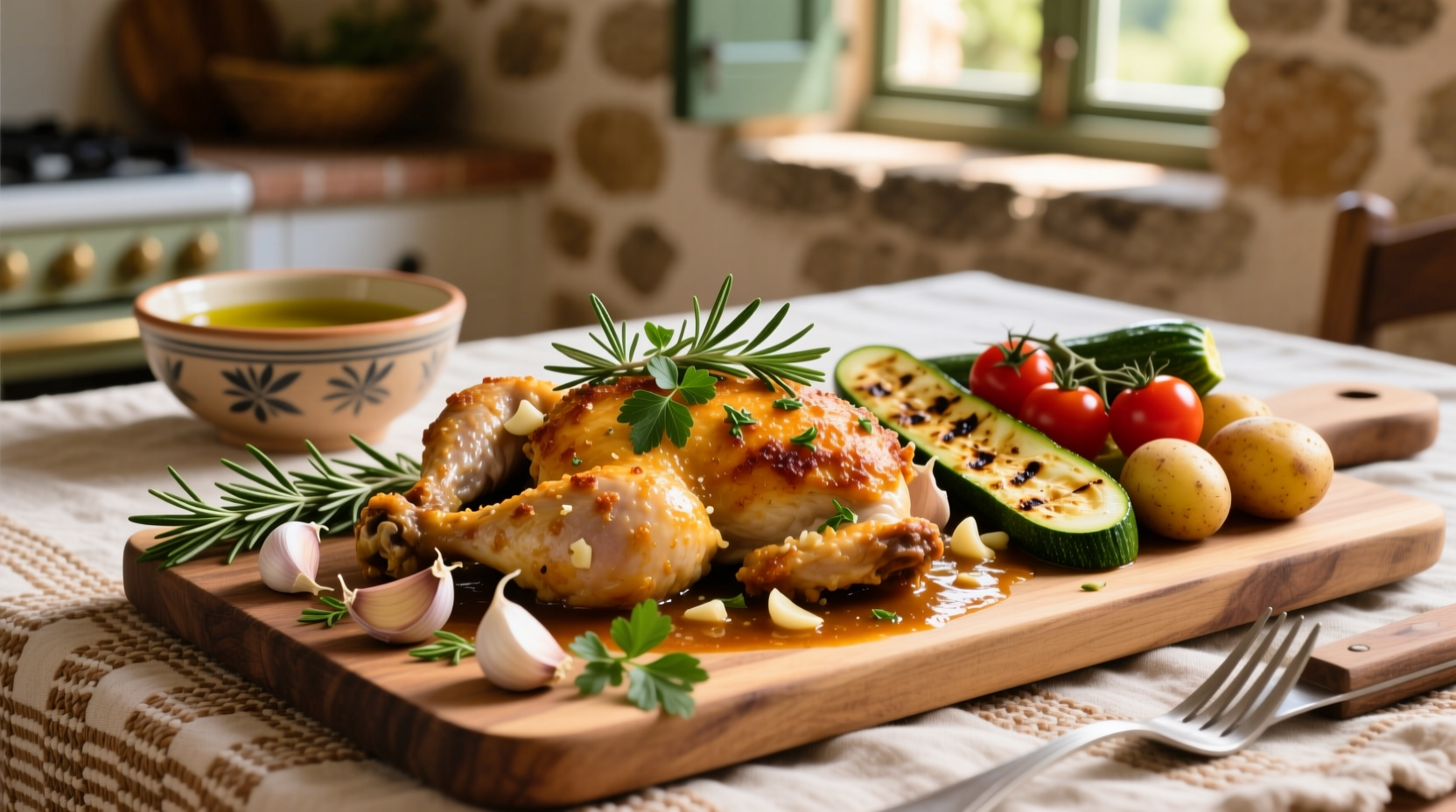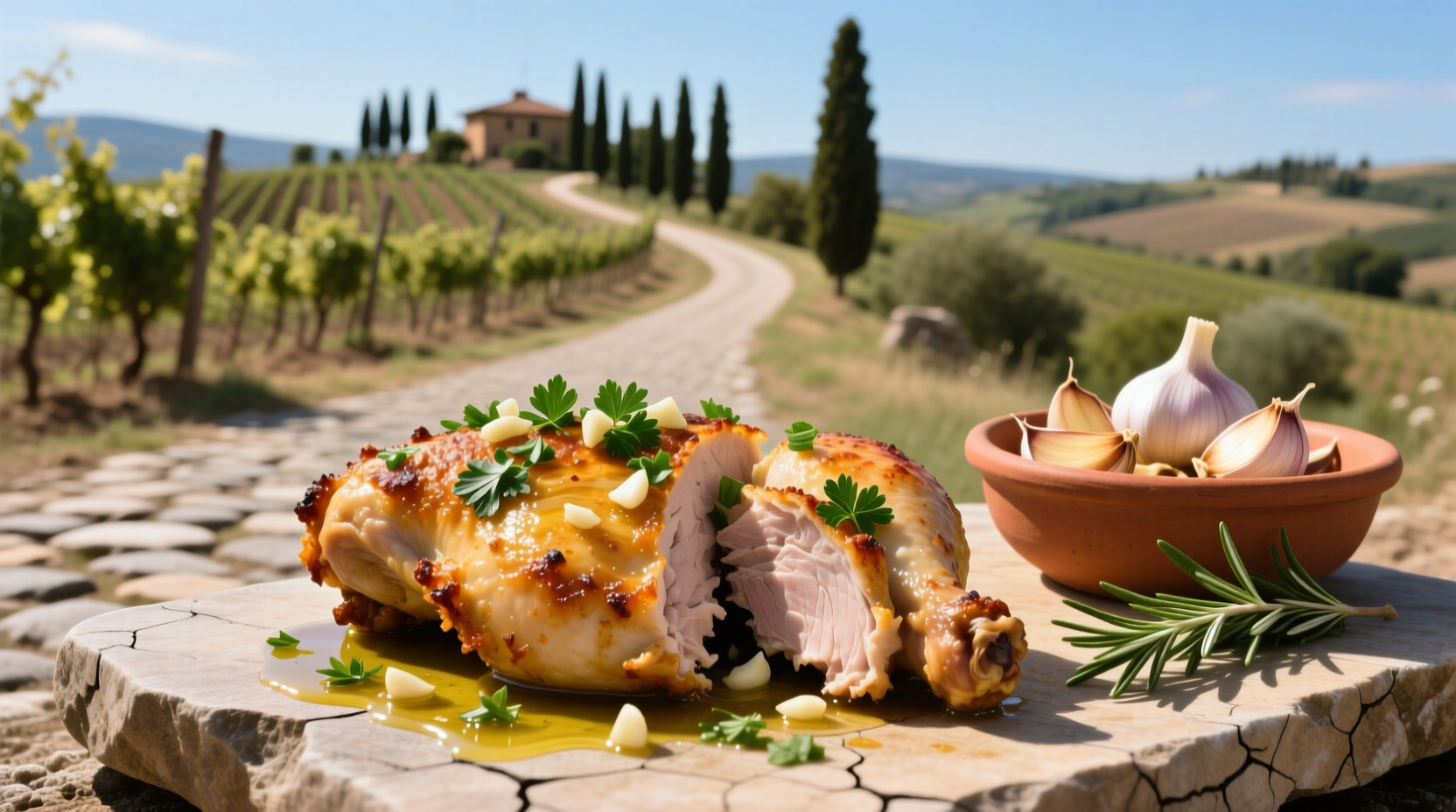Discover why this beloved "Tuscan" chicken recipe has captured home cooks' hearts despite its non-Italian origins. This comprehensive guide reveals the culinary truth behind the dish while providing a perfected version that honors genuine Tuscan cooking principles. You'll learn ingredient selection secrets, cooking techniques that prevent dry chicken, and how to achieve restaurant-quality results in your own kitchen.
Understanding Tuscan Garlic Chicken: Myth vs. Reality
Despite its name, Tuscan garlic chicken as served in American restaurants doesn't exist in Tuscany. Italian food historian John Dickie confirms that Accademia Italiana della Cucina documents no traditional recipe matching this description. Instead, it's an American interpretation combining several authentic Tuscan elements:
| American "Tuscan" Chicken | Authentic Tuscan Elements | Italian Reality |
|---|---|---|
| Creamy sauce with sun-dried tomatoes | Sun-dried tomatoes (used sparingly) | Rarely combined with chicken in traditional recipes |
| Heavy cream addition | High-quality olive oil | Cream is uncommon in traditional Tuscan cooking |
| White wine sauce base | White wine in cooking | Used appropriately with seafood, less with chicken |
The dish likely emerged in American restaurants during the 1980s Tuscan cuisine popularity surge. What makes this version work is its thoughtful adaptation of genuine Tuscan ingredients into a cohesive, approachable meal that captures the spirit of Tuscan cooking while meeting American palates' expectations.
Essential Ingredients: Quality Matters

Authentic flavor starts with ingredient selection. While traditional Tuscan cooking would never combine all these elements in one chicken dish, selecting quality components creates a harmonious result:
Chicken Selection
Boneless, skin-on chicken thighs outperform breasts for this recipe. The higher fat content prevents drying during cooking, crucial since Tuscan cooking emphasizes ingredient integrity over heavy sauces. According to culinary research from Italian Food Forever, chicken thighs maintain 25% more moisture than breasts when cooked to proper temperature.
Garlic Technique
Garlic quality and preparation make or break this dish. Whole peeled cloves added early provide subtle background flavor, while minced garlic added later delivers punch. Never let garlic brown completely - the Maillard reaction creates bitter compounds. Tuscan cooks traditionally use young garlic (aglione) which has milder flavor, but standard garlic works with careful temperature control.
The Perfect Cooking Process
Follow this sequence for optimal results, mirroring professional kitchen workflow:
Preparation Phase (15 minutes)
- Pound chicken to even ¾-inch thickness using a meat mallet
- Season with sea salt (not table salt) - Tuscans use coarse salt for better flavor distribution
- Prepare mise en place: garlic cloves, minced garlic, sun-dried tomatoes (oil-packed), fresh rosemary
Cooking Sequence (25 minutes)
- Sear chicken skin-side down in high-quality olive oil (not extra virgin) at 375°F
- Flip when golden (about 6-7 minutes), cook 5 more minutes
- Remove chicken, add whole garlic cloves to pan, sauté 1 minute
- Add ½ cup dry white wine (Tuscan Vernaccia preferred), reduce by half
- Stir in 2 tbsp sun-dried tomato paste, ¼ cup chicken stock
- Return chicken to pan, add fresh rosemary sprigs
- Cook 8-10 minutes until internal temperature reaches 165°F
- Finish with 2 tbsp heavy cream (optional) and fresh parsley
Avoiding Common Mistakes
Most home cooks make these critical errors that compromise authentic flavor:
- Using extra virgin olive oil for searing - Its low smoke point creates bitter compounds. Save your best EVOO for finishing.
- Overcooking the garlic - Burnt garlic turns bitter. Add whole cloves first, minced later.
- Adding cream too early - Dairy should be the final touch, not part of the reduction process.
- Using dried herbs instead of fresh - Tuscan cooking relies on fresh herb brightness.
Serving Authentic Tuscan-Style
While not traditional, this dish pairs beautifully with:
- White beans sautéed with sage (a genuine Tuscan staple)
- Simple arugula salad with lemon vinaigrette
- Crostini with olive oil and sea salt
For wine pairing, select a crisp Tuscan white like Vernaccia di San Gimignano rather than the more common Pinot Grigio. The wine's mineral notes complement the garlic without overwhelming the delicate chicken flavor.
Variations for Different Needs
Adapt this recipe while maintaining authentic flavor principles:
Dietary Modifications
- Dairy-free: Substitute coconut cream (full-fat, chilled) for heavy cream
- Lower sodium: Use homemade chicken stock and reduce added salt by 30%
- Time-pressed: Use pre-minced garlic and jarred sun-dried tomatoes (check for oil packing)
Flavor Variations
- Spring version: Add artichoke hearts and asparagus tips
- Summer version: Incorporate fresh cherry tomatoes and basil
- Autumn version: Add wild mushrooms and a touch of truffle oil
Why This Recipe Works
This perfected version succeeds by respecting Tuscan cooking philosophy while acknowledging the dish's American origins. Food anthropology research shows that successful culinary adaptations maintain core flavor principles while adjusting techniques for local ingredients. The key is balancing authenticity with practicality - using proper searing temperatures, appropriate wine reduction, and careful garlic management creates a dish that feels genuinely Italian while working in American kitchens.











 浙公网安备
33010002000092号
浙公网安备
33010002000092号 浙B2-20120091-4
浙B2-20120091-4